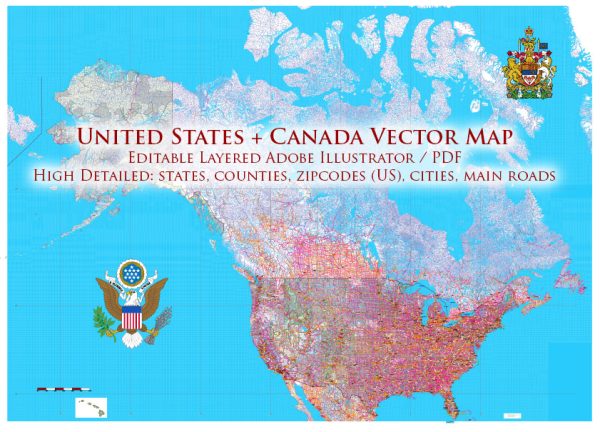The United States and Canada are both endowed with abundant water resources, and they share several major bodies of water and watersheds. Here are some key points about water resources in the United States and Canada:
- Great Lakes: The Great Lakes, consisting of Lake Superior, Lake Michigan, Lake Huron, Lake Erie, and Lake Ontario, are shared between the United States and Canada. These lakes are a significant source of freshwater for both countries and are used for various purposes, including drinking water supply, industrial use, and recreation.
- Rivers: Numerous rivers flow through both the United States and Canada, with many forming natural borders between the two countries. For example, the St. Lawrence River forms part of the border between New York and Canada. The Columbia River flows from Canada into the United States, and the Missouri River, which originates in the United States, eventually flows into Canada.
- The Continental Divide: The Continental Divide runs from Alaska to Mexico and separates the watersheds that drain into the Pacific Ocean from those that drain into the Atlantic Ocean. It also affects the flow of water between the United States and Canada.
- Transboundary Waters: There are several transboundary rivers and lakes that cross the US-Canada border, including the St. Marys River, the Niagara River, and the Rainy River. These water bodies are governed by international agreements and organizations that manage water usage and quality.
- Groundwater: Both countries have significant groundwater resources, which are vital for drinking water supply, agriculture, and industrial use. Groundwater availability can vary significantly by region.
- Freshwater Lakes and Reservoirs: Both countries have numerous freshwater lakes and reservoirs, which play a crucial role in water supply, recreation, and habitat for aquatic life. Examples include Lake Champlain, Lake Tahoe, and the Thousand Islands region.
- Water Management: Both the United States and Canada have well-developed systems for water management, which include regulations, monitoring, and conservation efforts. These systems help ensure the sustainability of their water resources.
- Challenges: Despite abundant water resources, both countries face challenges related to water quality, pollution, and sustainable management, particularly in areas with high population density and industrial activity. Climate change is also affecting water availability, with changing precipitation patterns and the potential for increased droughts in certain regions.
- Treaties and Agreements: Various treaties and agreements between the United States and Canada govern the shared water resources, such as the Boundary Waters Treaty of 1909, which established the International Joint Commission (IJC) to manage transboundary waters, and the Great Lakes Water Quality Agreement, which focuses on protecting and restoring the Great Lakes.
Overall, the United States and Canada are fortunate to have abundant water resources, but they also recognize the importance of responsible water management and conservation to ensure the sustainability of these vital natural assets.


 Author: Kirill Shrayber, Ph.D.
Author: Kirill Shrayber, Ph.D.